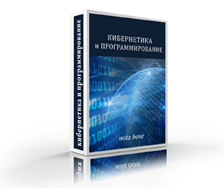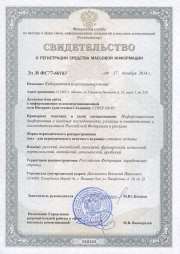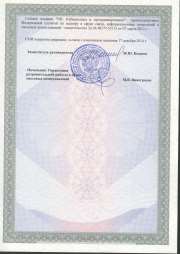MAIN PAGE
> Journal "Cybernetics and programming"
> Contents of Issue є 05/2017
Contents of Issue є 05/2017
|
Computer graphics, image processing and pattern recognition |
|
Moshkova T.V., Romenskii S.A., Rotkov S.I., Tyurina V.A. - Algorithmic and software implementation of the electronic designer of the graph of the 3D object assembly
|
|
pp. 1-13
|
DOI: 10.25136/2644-5522.2017.5.24342
Abstract: The subject of this article is the application of the apparatus of set-theoretic operations for the formation of the assembly graph of the construction of the 3D object. The article also considers organization of algorithmic and program electronic constructor of the graph of the 3D object assembly system as one of the ways of transforming archives of design documentation from paper representation to the electronic model of the object. Automation of this process is of great scientific interest and is in the process of developing some scientific geometric schools including the Nizhny Novgorod school. In the research the authors used theoretical and empirical methods: analytical generalization and systematization of information on literary and other sources, the formulation of the problem, the identification and resolution of contradictions, the use of the heuristic approach in constructing working hypotheses, the application of methods of geometric modeling. Automation of data conversion process from 2D to 3D, drawn images into the electronic product model known as the "solution of the inverse problem of descriptive geometry" has long attracted researchers but has not yet been introduced in any of the known geometric modeling systems. The study and analysis of the user's actions, when allocates elementary bodies in the drawing allows to develop the perfect algorithm of "automatic reading of the drawing" with maximum consideration of the heuristic component of this process. The program complex developed by the authors of the article is one of the preparatory stages for conversion of archives of drawn design documentation of the products from paper into electronic form and transformation of a 2D drawing into an electronic three-dimensional model of an object. It also allows conducting practical research in a poorly studied area of human perception of drafting documentation which is necessary for the preparation of software developers for CAD systems.

|
Potapov D.R., Artemov M.A., Baranovskii E.S., Seleznev K.E. - Review of Constructing Key-Value Data Containers to be Used in Self-Adapting Data Containers
|
|
pp. 14-45
|
DOI: 10.25136/2644-5522.2017.5.23557
Abstract: The article is devoted to existing methods of constructing associative data containers that can be used in self-adapting data containers. Construction of associative containers is a topical issue due to the growing popularity and frequent use of such containers in the spheres of NoSQL and BigData. The present article provides a review and analysis of sorted-out and hashed containers such as various kinds of trees, SSTable, hash-tables, etc. In addition, the authors of the article also analyze the scope of application of these structures. The article is of reviewing nature and aims at analysis and comparison of existing methods of key-value data containers construction. Despite the fact that this topic is widely presented in the academic literature, at the present time there are no works that would be fully devoted to the systematic review and analysis of key-value data containers construction. As a result of the research, the authors have defined the main spheres of application of data containers when using self-adapting associative data containers.

|
Iureva R.A., Timko A.S., Vedernikov K.A., Maltseva N.K. - On the Question about Wireless Data Transfer Technology in Telediagnostic System Line Construction
|
|
pp. 46-53
|
DOI: 10.25136/2644-5522.2017.5.24057
Abstract: The authors of the present article examine current and developing technologies of wireless data transmission used to construct telediagnostic system lines based on the example of a cyberphysical production system of Diakont. The authors describe advantages and disadvantages and evaluates efficiency of technology implementation. The rationale of the research is caused by the fact that the authors provide an analysis of prospects and challenges of implementing wireless lines which will allow to increase the speed of data transmission and diagnostic procedure remoteness from the feed end at the account of reducing the weight of a connecting cord. The analysis methods used by the authors include: theoretical analysis of current findings in the sphere of wireless connections used in cyberphysical telediagnostic systems, in particular, those that are used to control the state of pipelines. Modification of the robot for wireless data transmission is based on fixing bridges and antennas on an explosion-proof delivery system and pipe face (feed end). Modification of the eplosion-proof delivery system implies adjustment of the installation, circuit design and software. The authors emphasize the need to develop a new type of a signal conditioner lid with high-frequency connectors as well as a new antenna lid on the drivers block. Theoretically speaking, there are technologies allowing to convert to wireless data transmission inside an installation in order to perform the pipeline inspection. The main question today still remains the one about electromagnetic compatibility and noise immunity. For this purpose it is necessary to purchase equipment that would satisfy each standard in particular and to arrange tests for electromagnetic compatibility, carrying capacity, action radius, etc.

|
Aksenova O.Y., Ovsyannikova E.A., Pachkina A.A. - The Use of Means of Three-Dimensional Graphics in the Planning of Reclamation Works
|
|
pp. 54-63
|
DOI: 10.25136/2644-5522.2017.5.24365
Abstract: The subject of this research is the ability to effectively use tools of three-dimensional graphics in planning reclamation of the waste land in mining industry. The object of the research is the used square cut "Kedrovsky" in Kemerovo. Special attention is paid to the task of reviewing the effectiveness and necessity of use of means of three-dimensional computer graphics in the planning of reclamation works. The authors of the article propose a solution to the issue of land restoration at the design stage of measures to restore the earth's surface through a three-dimensional computer graphics, in particular, visualization of disturbed area before and after reclamation that allows to clearly see the planned result, to choose and to scientifically substantiate an economically viable technology, and to ensure high environmental and social effects of the planned reclamation of the earth's surface. The methodology of the research is addressing the question of land reclamation by using the experimental-theoretical method through three-dimensional computer graphics. The main conclusion of the research is the comparative characteristics of time periods of the stages of remediation using three-dimensional computer graphics and applications, which shows that in the first case, time is significantly reduced for the final evaluation of the design solutions, which allows to clearly see the restored earth's surface after a maximum 5 months from the start of design, whereas without the use of a three-dimensional possibilities of computer graphics the visual results of restored landscape will be obtained through at least 2.5 years.

|
Mathematical models and computer simulation experiment |
|
Zakharov V.M., Pesoshin V.A., Shalagin S.V., Eminov B.F. - Automation Model of Nonlinear Pseudorandom Sequences with the Output Function on the Basis of Injective Mapping System
|
|
pp. 64-78
|
DOI: 10.25136/2644-5522.2017.5.23065
Abstract: The subject of the research is the methods of complicating the analytical structure of pseudorandom sequences by applying additional mapping of nonlinear external logic, in particular, nonlinear complication function, to elements fo initial pseudorandom sequence. The purpose of the research is to define and develop an algorithm of a mathematical model of nonlinear complication function presented on the basis of the modular operation of the simple modul exponentiation. This allows to obtain nonlinear pseudorandom sequences that have statistical properties close to the properties of a random sequence at the set maximum period. To present the model, the authors have used the formalism of the automation theory, finite field theory, residue number and primes theories. The authors offer their own automation model for creating nonlinear pseudorandom sequences with the set periods of L = 2^n-1 and L = 2^n, n >1 with the output function as the nonlinear complication function on the basis of nonlinear mapping of modules belonging to Fermal primes. It has been proved that the automation output function is an injective function that displaces elements of the De Bruijn sequence. It has been demonstrated that the algorithmic model of the automation output function allows to change the structure of nonlinear sequences by pseudorandomly displacing values of the primitive roots of the Fermal prime. The size of the nonlinear sequence assemble formed by the nonlinear complication function depends on the number of primitive roots and is determined by the lower bound of ќ(2^n), n>1 type.

|
Glushenko S.A., Dolzhenko A.I. - Training of a Neural-Fuzzy Network Using a Genetic Algorithm
|
|
pp. 79-88
|
DOI: 10.25136/2644-5522.2017.5.24309
Abstract: The authors of the article describe the features of the use and advantages of the genetic algorithm for learning the neural-fuzzy network. The authors review the literature sources that consider modifications of the genetic algorithm adapted to solve various problems. The authors found that the existing approaches to the implementation of the genetic algorithm contain a number of drawbacks for learning the neural-fuzzy network, so when forming a chromosome, the interval containing the peak of the membership function is encoded with 1, otherwise it is 0. This affects the resolving power when searching for the optimal solutions. The authors of the article also discuss in detail such aspects as the operators of the basic algorithm and give the scheme of the combined method of learning the network. To teach a neural-fuzzy network based on a genetic algorithm, the authors propose an approach for coding membership functions based on the α-level. As a fitness function of the genetic algorithm, the root-mean-square error was used. The novelty of the research is caused by the fact that the authors offer their own approach of coding membership functions based on the α-level which allows to increase the resolution of the algorithm when searching for the optimal solution. The main conclusion of the research is the fact that the approach proposed in the article makes it possible to adjust the parameters of the membership functions of linguistic variables for the neural-fuzzy network and to obtain more adequate values for the parameters of the output layer of the network.

|
Evstigneeva O.A., Yuganson A.N., Korobeinikov A.G., Grishentsev A.Y., Kubasheva E.S. - Optimization of Transitional Commutation Processes in Thermal Operations Systems
|
|
pp. 89-102
|
DOI: 10.25136/2644-5522.2017.5.24411
Abstract: The subject of the research is the method of reducing the spark load and commutation noise by separating the power elements of thermal plants. The object of the research is thermal installations. The aim of the research is to develop a method for separating the power elements of thermal plants in order to reduce the switching currents when performing thermal control. In the course of their research the authors have conducted simulation based on the example of a heating installation. The results of simulation and comparison of the systems with separation and without separation of the thermal circuits show the efficiency of the application of the separation method to reduce the switching currents while maintaining the admissible system characteristics by the cosφ criterion. The authors also offer their method for reducing switching currents in the process of temperature control of the temperature of thermal installations by transition from one power element of the thermal installation to several, the power of which is distributed in proportion to the first members of the Fibonacci series. The analysis carried out in the research has showed the possibility of reducing switching currents by increasing the number of thermal circuits. The possibility of reducing the switching voltages in several times is demonstrated. The authors offer to divide powers between consumers (thermal loops or cryogenic elements) in proportion to several first terms of Fibonacci numbers. The typical feature for dividing the system into several power circuits is the increase in reacting power. The authors offer the method to return part of the reacting power in thermal plants by back connection of thermal spiral elements.

|
Kolesnikov A.G. - Simulation and Optimization of Rigid Pavement Parameters
|
|
pp. 103-109
|
DOI: 10.25136/2644-5522.2017.5.24448
Abstract: The subject of the research is the simulation model of pavements in the form of multilayered construction on the rigid (elastic) base. In his research Kolesnikov pays special attention to the simulation of rigid pavement physical behavior as a set of equations that reflect changes in stress-deformed state of such constructions. The equation system takes into account geometric nonlinearity of the construction material and gives an opportunity to analyse the influence of various parameters on the stress and displacement indicators. Boundary conditions have been chosen to satisfy various types of description. The author has shown an opportunity to optimize geometrical parameters of the constructino and to achieve minimization of weight and volume of consumable material. Nonlinear equations that model the construction behavior were solved using the Bubnov-Galerkin method. The author has used such optimization criteria as the construction shape and thickness and features of the elastic base. The novelty of the research is caused by the fact that the author offers a simulation of the rigid pavement surface formed as a shallow shell on the elastic base with a slight chamber of arch in the middle. This makes the task more compolicated, however, it also allows to consider more real conditions of work. The task to optimize parameters and the solutions offered by the author will allow to significantly minimize the weight and to reduce the stress on the construction.

|
Automation of manufacturing and production planning |
|
Ulianov R.S., Shikolenko I.A., Velichkin V.A., Zav'yalov V.A. - Application of Optimization and Computer-Aided Instruction Methods in the Process of Computer-Assisted Design of Manageable LED Lighting Operations
|
|
pp. 110-122
|
DOI: 10.25136/2644-5522.2017.5.24012
Abstract: The authors of the article examine issues related to increasing efficiency of computer-assisted design of lighting, in particular, transferring from design decision-making methods in the process of selecting lighting modes with the manageable spectrum based on the expert evaluation towards man-computer approaches. The authors of the given research apply the aforesaid approaches to one of the basic qualitative property of light emission, in particular, spectral radiant intensity. The authors describe methods for selecting optimal properties of artificial light sources as well as methods of their automated classification. In the process of their research the authors analyze methods of computer-aded analysis and optimization of the target function of the lighting spectral distribution based on application of widely used specialized programming language libraries Python. As a result of the research, the authors offer a conceptual description of two solutions that can be used in a complex process of manageable LED lighting operations design. The first solution allows to optimize the process of selecting the LED-based lamp RGB component emission power in case of approximation of the spectral distribution target function to the emission source. The second solution offers an automated classification of lighting sources depending on their spectral properties in order to prepare initial data for desinging or operating lighting systems. In conclusion, the authors analyze how these two solutions can be used in their combination within the framework of the systems approach and make suggestions about how these solutions can be developed further.

|






